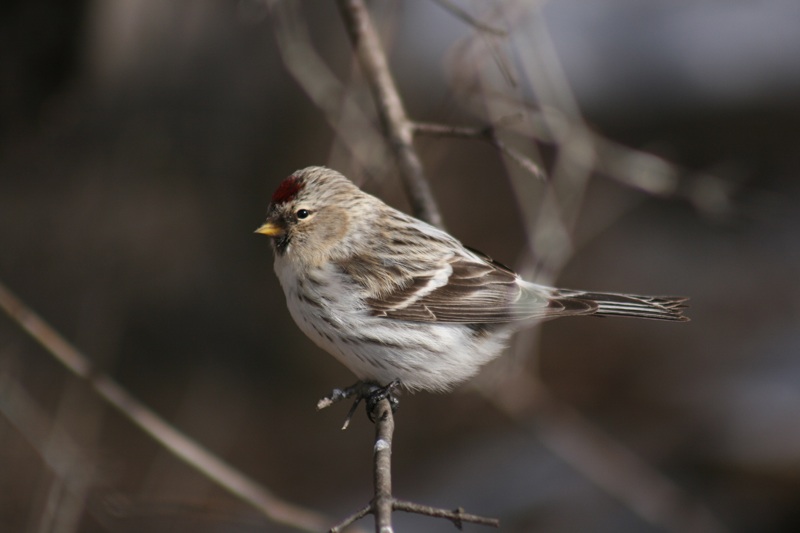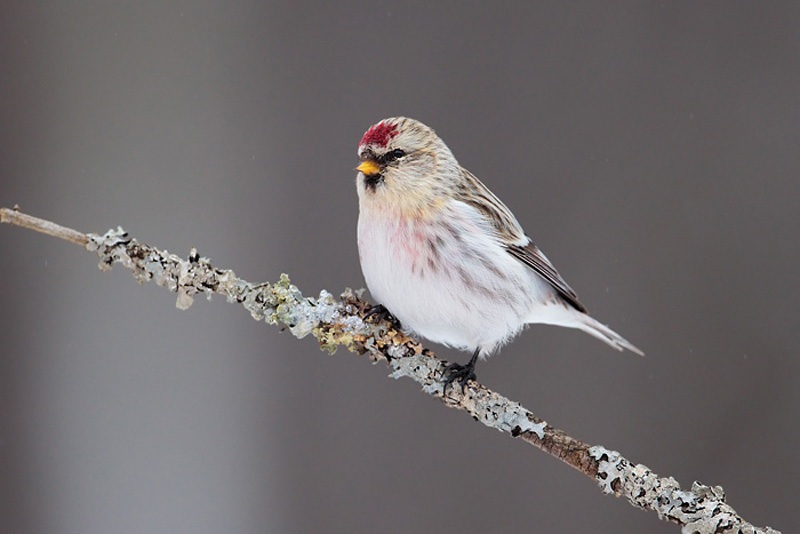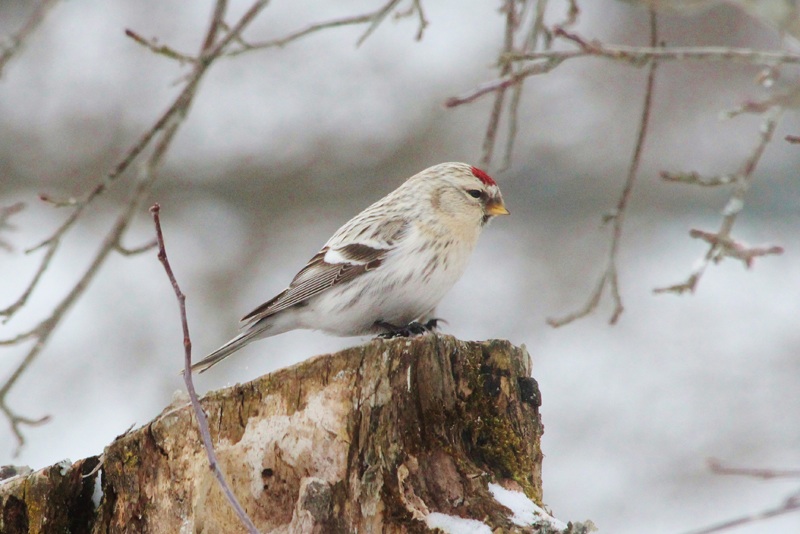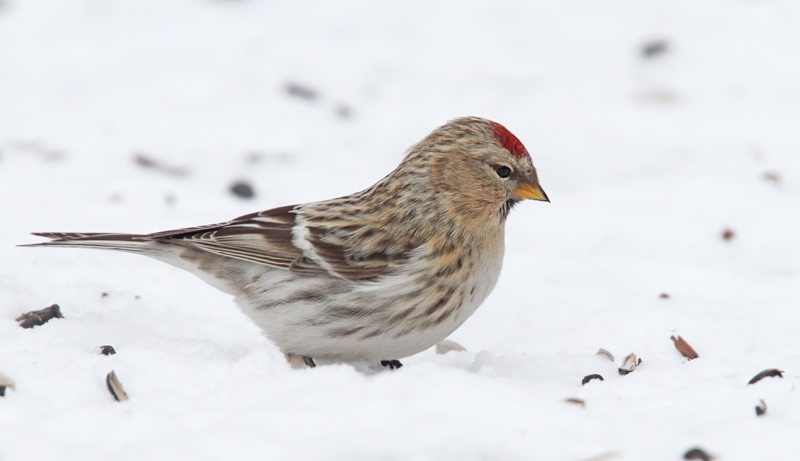By Ryan F. Mandelbaum:
Dedicated finch fans know that it’s worth scanning every Common Redpoll flock for their frostier, even more boreal cousin: the Hoary Redpoll. Telling the two species apart can be tricky, but there are a few tricks that will make identifying Hoaries even easier.
Like Common Redpolls, Hoary Redpolls are northern finches who feed on seeds in shrubs, fields, and trees all the way into the tundra—typically existing even further north than their Common cousins. They’re streaked finches with red caps, who will occasionally irrupt south approximately every few years in search of seed. So far they’ve already irrupted southward into New York, Ohio and Pennsylvania, and it’s not even the end of November yet.

As for the differences, you should be looking for a frosty, pale bird with reduced streaking. While Common Redpolls have brownish chests with lots of streaks, “classic” Hoary Redpolls will have nearly white chests with few streaks, if any. Perhaps the most important plumage detail are the rump and undertail coverts. Commons will have several streaks on their undertail and rumps; Hoaries will have none to maybe a couple very fine streaks on the white undertail (though immature female birds may have as many as 3 fine streaks). Hoaries have even smaller bills, like a Common Redpoll’s bill but pushed in, particularly with females. They’re also rounder and fluffier looking, owing to their extra feathering. For an even more in-depth look at The Redpoll Complex see here.
It’s also important to note that there sometimes no firm line between Hoaries and Commons, as detailed in a blog post by David Sibley. There are plenty of birds that seem to exist on a continuum between Hoaries and Commons in their appearance. It’s not clear whether these birds are dark Hoaries, pale Commons, or hybrids between the two. Birders are increasingly wondering whether Common and Hoary redpolls are separate species at all, subspecies of a larger redpoll species, or otherwise. The remote habitats of these birds make them extremely difficult to study, so try to document any questionable redpoll you see with notes and photos if possible, and don’t be afraid to simply call the bird a “Common/Hoary Redpoll” and leave it at that.

This winter’s finch flight has brought Hoary Redpolls to southeastern Canada and the United States in larger proportions than usual; birds have popped up all over the Saint Lawrence River valley, the Ontario Peninsula, and even as far south as Cleveland and Boston. The Common Redpoll irruption is perhaps the largest in a decade, and with Hoary Redpolls coming southward with them, this irruption offers an excellent opportunity to study and document these finches’ appearance, habits, and diet. Be sure to take notes and report your Redpoll sightings to eBird.
FiRN is a nonprofit, and has been granted 501c3 status. FiRN is committed to researching and protecting these birds and other threatened finch species like the Evening Grosbeak and Rosy-finches, and if you have been enjoying all the blogs and identifying of Red Crossbill call types, redpoll subspecies and green morph Pine Siskins FiRN has helped with, please think about supporting our efforts and making a small donation at the donate link below.
Cover Photo Credit Luke Seitz Cortland, NY February 2013: A ssp. exilipes Hoary Redpoll. Bird has frosty edging to mantle and back of head, moderately small bill, ochre wash to face and upper parts, and wispy flank streaking. Undertail clean, and rump looked clean. This particular individual is quite buffy, which isn’t unusual in female type birds.



